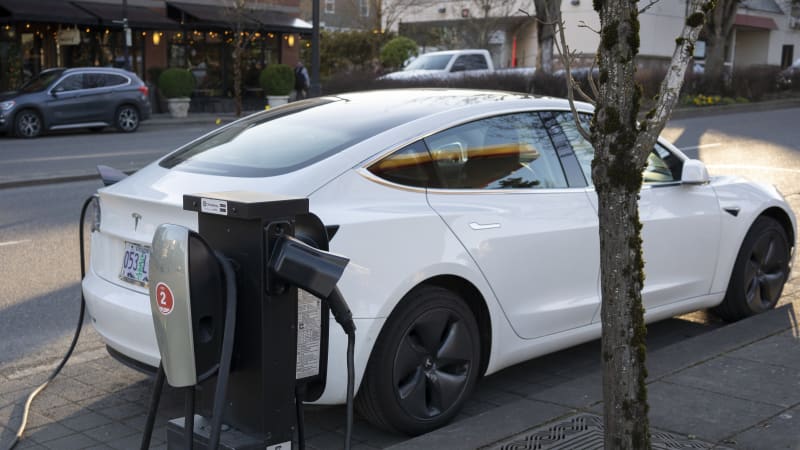A Tesla Model 3 at a roadside EV charging station in Lake Oswego, Oregon. (Getty Images)
oregon live report Oregon will become the third state to follow California’s decision to mandate 100% zero-emission new vehicle sales by 2035. Advanced Clean Car II Rule (ACCII) is the fourth step in a series of recent rulemakings that include the latest Clean Truck Rule, Climate Protection Program and Clean Fuels Expansion Program. The plan calls for battery electric, hydrogen fuel cell and plug-in hybrid vehicles to account for 35% of automaker sales in the state by January 1, 2026. By 2035, this percentage will rise to 100%.
Although ICE-equipped vehicles already on the road can continue to be used, ACCII has revised the test definitions and requirements for gasoline-powered vehicles expected to be on the market by 2035, with the aim of “reducing cold start emissions. , reducing maximum displacement and evaporative emissions.” Oregonians can purchase new gasoline vehicles outside the state and used gasoline vehicles within the state.
In an attempt to secure EVs that are convenient for most residents, ACCII rule text Pure electric vehicles must come standard with at least 150 miles of real-world range on a single charge, fast charging capability, and at least a 20-foot long charging cable capable of supporting Level 2 tariffs. , “minimum warranty and durability requirements.” Major battery warranty provisions are already advertised, such as an 8-year warranty period or 100,000 miles, and 80% capacity remaining at the end of that period. Consistent with many regulations. Plug-in hybrids must have an EPA-rated all-electric mileage of at least 50 miles and have a 15-year or 150,000-mile extended warranty on emissions-related components, with similar charging capabilities, inlets, and It should include a charging code like ZEV.” One welcome provision is that manufacturers must provide repair information and all necessary maintenance tools to non-dealer shops.
In addition, ACCII will help ensure that EVs are affordable for low-income households, that dealers that offer low-income assistance programs have access to a supply of used EVs, and that community car-sharing programs help acquire EVs. We hope to provide incentives for manufacturers.
Commission spokesperson Rachel Sakata said of the 700 responses submitted during the public comment period, 200 were against. “There are a lot of people in the state who don’t understand where this is going,” Addington said, emphasizing that people, especially in rural areas, lack the infrastructure to go far. Yes.Necessary.
Leah Feldon, Interim Director of the Department of Environmental Quality, suggested looking ahead for the long term. “These rules are a support mechanism, not a driving force. Create a traffic light in Oregon. Bring zero-emission vehicles here, bring infrastructure here, get ready for the grid.”

